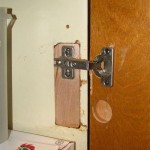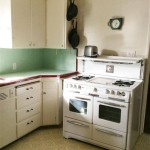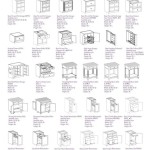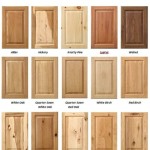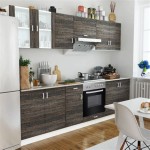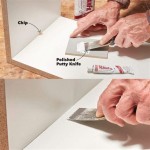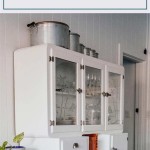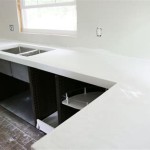Kitchen Cabinet Side Shelves: Maximizing Space and Efficiency
Kitchen cabinet side shelves offer a strategic solution for optimizing storage and accessibility within existing kitchen spaces. This interior cabinet modification, often implemented during initial design or as a retrofitted addition, aims to efficiently utilize the often-overlooked vertical space within cabinet structures. The integration of side shelves can significantly improve organization, visibility, and overall functionality, contributing to a more user-friendly and streamlined kitchen environment.
These shelves are typically constructed from durable materials such as wood, metal, or high-density polymers, chosen for their load-bearing capacity and resistance to moisture and everyday wear and tear. The design and configuration of side shelves can vary widely, ranging from simple fixed shelves to adjustable, pull-out, or rotating models, each catering to specific needs and storage requirements. Understanding the different types and applications of kitchen cabinet side shelves allows homeowners and designers to make informed decisions regarding the most effective storage solutions for their individual kitchen layouts and lifestyles.
The primary advantage of incorporating side shelves lies in their ability to convert unusable or partially-utilized space into functional storage areas. Traditional cabinet designs often feature large, open spaces that can lead to disorganization and difficulty in accessing items stored towards the back. Side shelves, particularly pull-out variations, bring items within easy reach, eliminating the need to rummage through cluttered cabinets. This increased accessibility contributes to improved efficiency during meal preparation and cleanup.
Furthermore, the structured organization provided by side shelves facilitates inventory management. By creating designated spaces for specific items, homeowners can readily identify what they have on hand, minimizing unnecessary purchases and reducing food waste. This level of organization proves particularly beneficial in pantries or cabinets housing frequently used ingredients and kitchen staples.
Enhancing Storage Capacity and Accessibility
One of the core benefits of kitchen cabinet side shelves is the significant increase in usable storage space. Standard cabinets often have wasted vertical space, especially above items that don't reach the full height of the interior. Installing side shelves allows for the filling of these gaps, creating additional tiers for storing smaller items like spices, canned goods, or cleaning supplies. These shelves effectively multiply the storage area without altering the external footprint of the cabinet itself.
Accessibility is dramatically improved, particularly with pull-out or rotating side shelves. These features allow homeowners to easily view and retrieve items stored at the back of the cabinet, preventing forgotten items from expiring or being overlooked. Pull-out shelves glide smoothly on tracks, bringing contents forward for immediate access. Rotating shelves, often referred to as lazy Susans, spin to provide a 360-degree view and easy reach of all stored items. These mechanisms are especially useful in corner cabinets, where reaching deep inside can be challenging.
The improved visibility provided by side shelves reduces the likelihood of duplicate purchases. When items are easily seen and accessible, homeowners are less likely to buy replacements for items they already own but cannot readily find. This not only saves money but also reduces clutter and promotes a more organized kitchen environment. Clear visibility also assists in tracking expiration dates, minimizing food waste and ensuring the use of fresh ingredients.
Beyond the improved access and visibility, side shelves can improve the safety of accessing some stored items. Heavy or awkwardly shaped items stored on high shelves can present a safety hazard when trying to retrieve them. By using pull-down side shelves, the items within reach can be accessed with less bending and straining, reducing the chance of accidental injury.
Types of Kitchen Cabinet Side Shelves
The market offers a diverse range of kitchen cabinet side shelves, each designed for specific applications and storage needs. Fixed shelves, the simplest type, are stationary and provide a basic tiered storage solution. These shelves are typically installed permanently during cabinet construction or retrofitted into existing cabinets using brackets or supports.
Adjustable shelves offer greater flexibility, allowing homeowners to customize the spacing between shelves to accommodate items of varying heights. These shelves often feature pre-drilled holes or tracks within the cabinet interior, allowing for easy repositioning. The adjustability is particularly useful for adapting to changing storage needs over time.
Pull-out shelves, also known as sliding shelves or roll-out shelves, are a popular choice for maximizing accessibility. These shelves are mounted on tracks that allow them to glide smoothly in and out of the cabinet. This design eliminates the need to reach deep into the cabinet, making it ideal for storing frequently used items or those stored at the back.
Rotating shelves, commonly referred to as lazy Susans, are designed for corner cabinets or other hard-to-reach areas. These shelves rotate 360 degrees, bringing all stored items within easy reach. They are particularly useful for storing pots, pans, or other bulky items that can be difficult to access in conventional cabinet configurations. Some rotating shelves are circular, while others are kidney-shaped to better fit the interior of corner cabinets.
Specialized side shelves include options designed for specific storage needs, such as spice racks, wine racks, and utensil organizers. These shelves often feature custom-designed compartments or holders to keep items neatly organized and readily accessible. They can be integrated into existing cabinets or added as standalone units.
Another type of side shelf is a pull-down shelving system. These shelves, usually mounted higher up in cabinets, can be pulled down to a more accessible level. These shelves are useful for people with limited mobility or for those who want to avoid reaching to access heavy items. They are especially useful for storing items that are only used on occasion. These pull-down shelves provide an ergonomic solution for many users.
Installation and Material Considerations
The installation of kitchen cabinet side shelves varies depending on the type of shelf and the existing cabinet structure. Fixed shelves typically require attaching brackets or supports to the cabinet walls using screws or anchors. Adjustable shelves often feature pre-drilled holes or tracks for easy installation.
Pull-out shelves require careful alignment and secure attachment to the cabinet interior to ensure smooth gliding and stability. The tracks must be properly aligned and leveled to prevent the shelf from sticking or wobbling. Rotating shelves require precise placement of the rotating mechanism to ensure smooth and balanced rotation.
The choice of materials for kitchen cabinet side shelves is crucial for durability and longevity. Wood shelves, typically made from hardwood or plywood, offer a classic aesthetic and sturdy construction. They can be stained or painted to match the existing cabinet finish. However, wood is susceptible to moisture damage and may require sealing or coating to prevent warping or cracking.
Metal shelves, often made from stainless steel or coated wire, offer excellent strength and durability. They are resistant to moisture and easy to clean. Metal shelves are a popular choice for pantries and cabinets storing heavy items. However, they may not be as aesthetically pleasing as wood shelves.
High-density polymers, such as melamine or PVC, offer a cost-effective and durable alternative to wood and metal. They are resistant to moisture and easy to clean. Polymer shelves are available in a variety of colors and finishes, making them a versatile option for different kitchen styles. However, they may not be as strong as wood or metal shelves.
Regardless of the material chosen, it's essential to select shelves that can withstand the expected load and environmental conditions. The weight capacity of the shelves should be carefully considered, especially for cabinets storing heavy items. Moisture resistance is particularly important in areas prone to spills or humidity.
The aesthetics of the side shelves should complement the overall kitchen design. Matching the finish and style of the shelves to the existing cabinets creates a cohesive and integrated look. Consider the color, texture, and hardware of the shelves to ensure they blend seamlessly with the surrounding décor.
The dimensions of the side shelves must be carefully measured to ensure a proper fit within the cabinet interior. Accurate measurements are crucial for avoiding gaps or overhangs. Consider the depth, width, and height of the shelves to maximize storage space without interfering with the cabinet doors or other internal components.
Proper installation is critical to the long-term performance of kitchen cabinet side shelves. If unsure about the installation process, consider hiring a professional installer to ensure a secure and level mounting. Poorly installed shelves can be unstable and may lead to damage or injury.
Kitchen cabinet side shelves represent a practical and effective solution for maximizing storage and enhancing accessibility in kitchen spaces. By understanding the different types, installation considerations, and material options, homeowners can make informed decisions to optimize their kitchen organization and create a more efficient and user-friendly environment.

Like The Open Shelves At End Of Cabinets Corner Kitchen Cabinet Wall

20 Ideas For Using Wasted Space On The Ends Of Kitchen Cabinets

20 Ideas For Using Wasted Space On The Ends Of Kitchen Cabinets

20 Ideas For Using Wasted Space On The Ends Of Kitchen Cabinets

Open Shelf End Wall Cabinet Ana White

End Of Cabinet Corner Shelves Coming Out Our Kitchen

Kitchen Cabinet End Panel Organizer Design Ideas

Kitchen Cabinet End Panel With Custom Shelves Transitional

26 Clever Small Kitchen Ideas To Make The Most Of Every Inch Corner Cabinet Storage Shelves Cupboard

77 Useful Kitchen Storage Ideas Digsdigs
Related Posts

